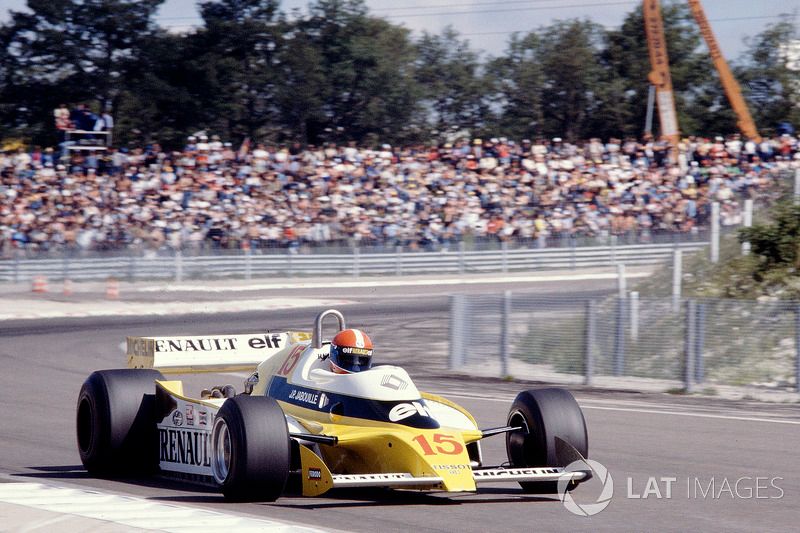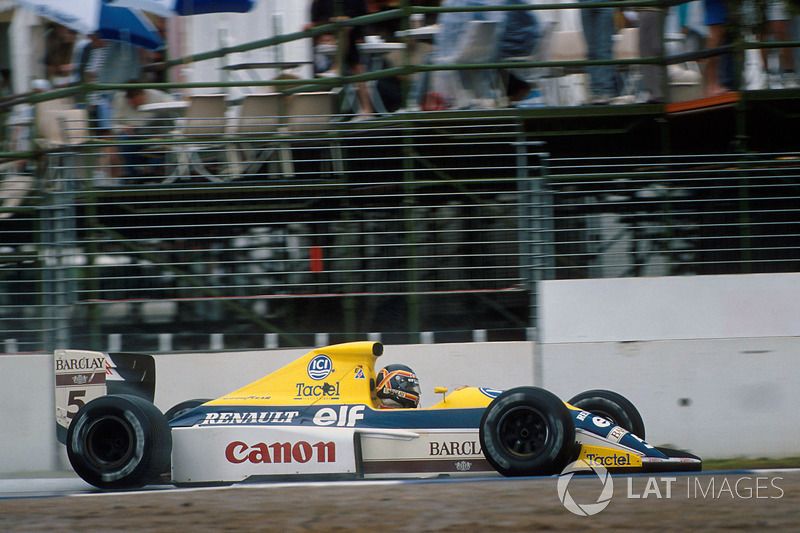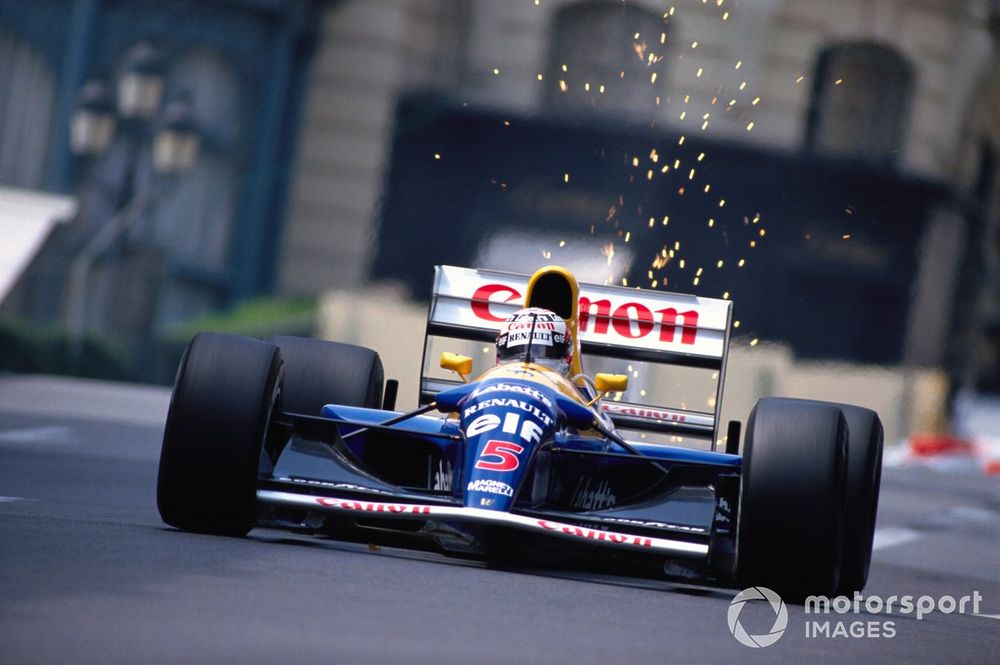Renault has finally confirmed that it will stop its F1 engine operation with the change coming into effect for the 2026 season and beyond.
This comes after months of speculation surrounding the future of the French engine manufacturer, which currently supplies the Renault-owned Alpine F1 Team.
The employees of Renault’s factory in Viry-Chatillon, which is on the outskirts of Paris, were not happy with the plans either, staging a protest at Monza’s Italian Grand Prix in September.
But it wasn’t enough to stop their bosses from confirming the decision, so why is this happening and what is the history of Renault power units in the series?
Why is Renault stopping its F1 engines?
The Renault engine has a rich history in F1, winning 12 constructors’ championships — the second-most in history after Ferrari.
Its last title, however, was with Red Bull in 2013 and since then Renault’s stock has dropped, having largely struggled in the turbo-hybrid era.
In 2023, for example, the Renault engine had approximately 20-30bhp less than rivals Honda, Mercedes and Ferrari.

Pierre Gasly, Alpine A523
Photo by: Zak Mauger / Motorsport Images
So it was lagging behind on performance and the advantages of an F1 team running its own engine are much less than in previous years.
That’s because manufacturers have gotten more on top of things, and Alpine’s former team boss Bruno Famin once explained that “if we take a Ferrari or Mercedes engine, I’m quite convinced that all the integration, all the packaging, will be already very, very good.”
This has been evident in 2024, as Mercedes customer outfit McLaren is currently leading the championship with its engine playing a key role to that success.
And if the performance isn’t there, then it is even more illogical for a company to spend huge amounts of money to run its own power unit.
In Renault’s case, the end product has actually put them on the back foot as Alpine is next-to-last in the 2024 championship while progress on the 2026 engine was understood to be stalling.
So it arguably did not make sense to continue the F1 project given what Alpine is hoping to achieve in the automotive market, where the money can now be better spent.
This means the Viry factory is still going to be in use, but will be transformed into an engineering centre to contribute to the technology of future Renault and Alpine cars.

Pierre Gasly, Alpine A524
Photo by: Alastair Staley / Motorsport Images
Alpine has therefore insisted that all current Viry staff are guaranteed jobs going forward, especially as it will continue with other motorsport series like the World Endurance Championship and customer projects such as Formula E and Rally-Raid.
Which engine will the Alpine F1 Team now use?
It is expected that the Alpine F1 Team will use a Mercedes power unit from the start of the new regulations in 2026.
That is because Renault has long been in discussions with the German manufacturer, which currently supplies McLaren, Williams and Aston Martin — who will switch to Honda in 2026 — as well as its factory squad.
But discussions with Mercedes are still ongoing and nothing has been formally announced yet regarding a future partnership.
The history of Renault F1 engines
Renault has now been involved in F1 across six decades, but what are some of its key moments?
Renault makes its F1 debut in 1977
Renault started to manufacture engines at its Viry base in 1976 ahead of the factory squad’s F1 debut the following year with the RS01.
The car was famous for featuring F1’s first-ever turbocharged power unit, which actually caused Renault to struggle. The RS01 was highly unreliable and driver Jean-Pierre Jabouille retired from the first six grands prix that he entered with the French squad, causing his car to be dubbed the “Yellow Teapot”.
It was not until 1979 that things started to improve, as a switch to the ground-effect RS10 resulted in Renault scoring four podiums that year, including Jabouille’s maiden victory at the French Grand Prix.

Jean-Pierre Jabouille, Renault RS10
Photo by: Motorsport Images
Renault was now on a roll as three wins followed in 1980 en route to it coming fourth in the championship. The team’s reputation subsequently improved and back-to-back third-place finishes followed in 1981 and 1982, the years when Alain Prost joined the squad and scored the first five grand prix victories of his career.
Renault signs its first customer outfit in 1983
By 1983 Renault had established itself as one of F1’s leading outfits and the engine was a key part of that, so it began its own customer programme by supplying Team Lotus that year.
The customer team power units were prepared by Mecachrome — a precision engineering company — and grew in competitiveness as 1983 wore on thanks to the signing of designer Gerard Ducarouge.
It culminated in Renault finishing runner-up to Ferrari in the championship, while Lotus came eighth having scored a podium at Brands Hatch. The customer programme expanded in 1984 as Renault began supplying fellow French team Ligier ahead of Tyrrell joining the following year.
But in 1985, the Renault engines were once again unreliable and it prevented Lotus driver Ayrton Senna from fighting for the title — his two victories being accompanied by seven retirements.
It was not a great year for the Renault works team either, as it finished below Ligier in the championship amid major financial problems at the company. Renault could not justify the expenses needed to maintain a competitive car, so it was just an engine supplier in 1986 before leaving the series altogether at the end of the season.
But the break only lasted for two years, as Renault powered Williams in 1989 — producing the first pneumatic valved 3.5 V10 engine. It led to the British squad finishing second in the standings and three years later Ligier returned to Renault power units.

Thierry Boutsen, Williams FW13
Photo by: Sutton Images
A Renault engine wins its first F1 title
Renault had been supplying F1 engines on and off over a 15-year period by 1992, but never once produced a power unit good enough for a championship.
That all changed in 1992 when F1’s strongest engine belonged to Renault. It resulted in Williams dominating the season, of course helped by the technically-advanced FW14B chassis, as Nigel Mansell won eight of the opening 10 grands prix before clinching his maiden title at the season’s 11th round.
Sir Patrick Head, Williams technical director in 1992, said: «It was certainly very good and stronger than the Honda that was powering the McLaren.
“The Honda was easily as powerful, if not more powerful, but it was immensely heavy, while the Renault was a lot heavier than the engines that were to follow it.
«It was the best racing engine given the combination of power, weight, fuel consumption, installation and so on. It was also extremely reliable.»
Renault engines dominate F1 in the 1990s before success with Fernando Alonso
That championship in 1992 was monumental for Renault, as it began a six-year period of domination where the French marque supplied every winner of the constructors’ title.
This was down to the drivability and fuel efficiency of the power unit, while Renault also showed an innate ability to adapt.

Nigel Mansell, Williams FW14B Renault
Photo by: Rainer W. Schlegelmilch / Motorsport Images
In 1995, for example, regulations reduced the maximum engine displacement to three litres but Renault overcame this by making its RS7 lighter, while adding the innovative fly-by-wire throttle which makes a car more reliable.
It resulted in Benetton claiming a double title in 1995 amid a dominant run by Williams, who won five championships between 1992 and 1997. Renault left F1 at the end of that year though, before returning with its factory squad which bought Benetton in 2000.
This led to Renault claiming the 2005 and 2006 crowns with Fernando Alonso behind the wheel, where the reliable R25 power unit was key to the success.
Successful Red Bull partnership turns sour leading to Renault’s demise
Renault signed its first customer team of this new era in 2007, where the French marque began powering Red Bull — a partnership which yielded four consecutive double titles between 2010 and 2013.
That championship in 2010 also remains the last time a customer-engined F1 car won the title. It is because, in 2011, Red Bull was promoted to full-works status as Renault’s factory squad was rebranded to Lotus Renault GP.
But even during the dominant run, the relationship was fractious because Renault believed it was not receiving enough credit.
The partnership then came to a head during the turbo-hybrid era as Mercedes power units ruled supreme. Renault engines, on the other hand, were slow and catastrophically unreliable and 187 points for Red Bull resulted in it finishing fourth in 2015 — netting just 27% of Mercedes’ score.

Daniil Kvyat, Red Bull Racing RB11 Renault, leads Kimi Raikkonen, Ferrari SF-15T
Photo by: Sam Bloxham / Motorsport Images
Christian Horner even labelled the performance from Renault as “unacceptable”, yet both parties persisted with the partnership despite numerous threats of termination.
Despite that, McLaren joined Red Bull as a Renault-powered constructor in 2018 after its toxic time with Honda. It was hoped that this three-year partnership would aid the competitiveness of the Renault works team, but problems still continued — especially with Red Bull.
The Milton Keynes squad retired from 10 grands prix in 2018, seven of which were caused by poor reliability, with Horner stating “we’ve been paying to fly in first class, but ended up with an economy ticket”.
So Red Bull joined forces with Honda for 2019, leaving McLaren as the only team buying power units from Renault. But, that partnership soon ended as McLaren became a Mercedes customer-outfit in 2021 leaving interest in Renault engines at an all-time low.
That was also the year Renault’s factory squad rebranded itself as Alpine. But, it has been a disappointing three years because, despite Esteban Ocon claiming an unlikely win at the 2021 Hungarian GP, Alpine has not finished above fourth in the championship.








